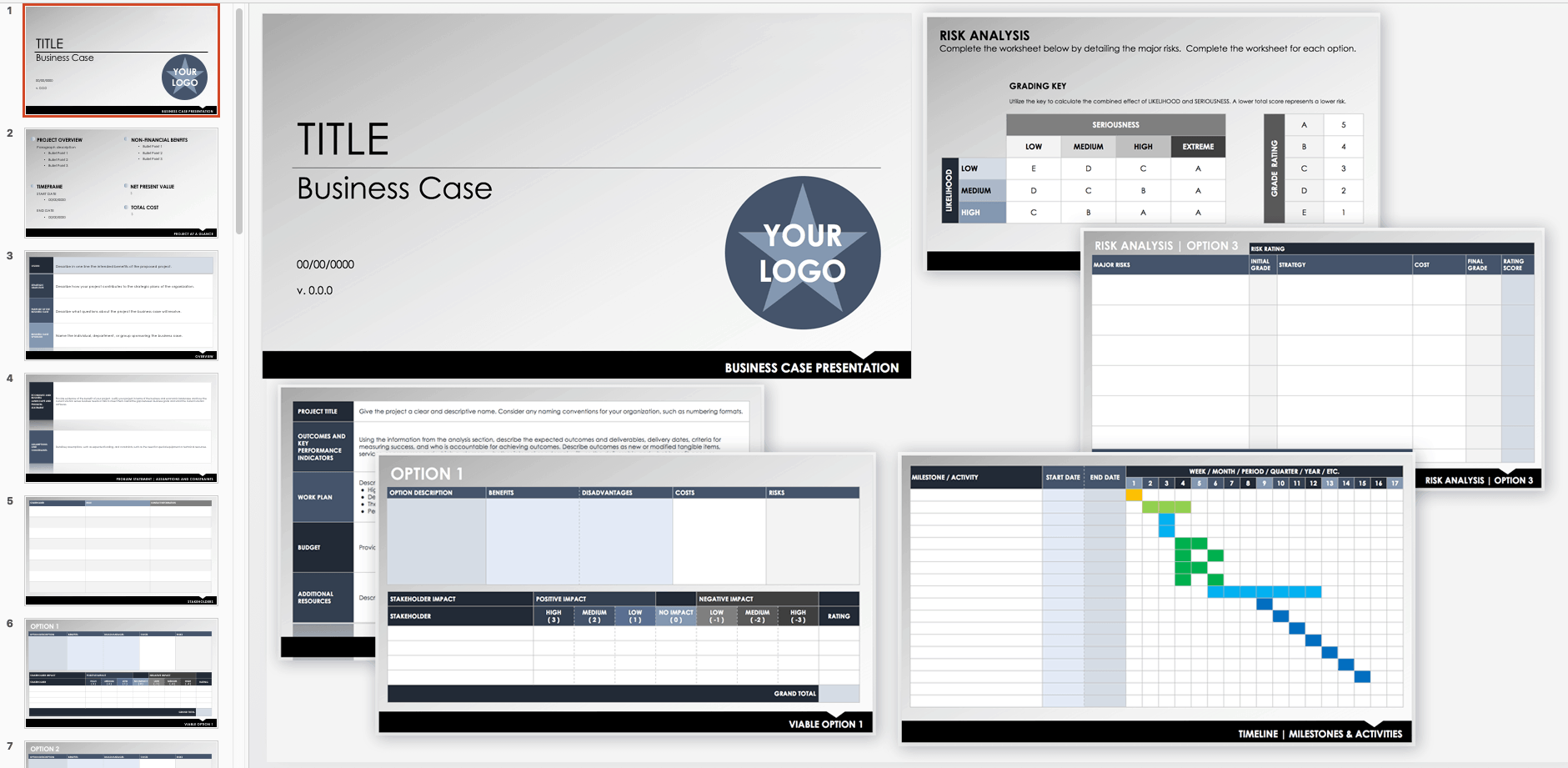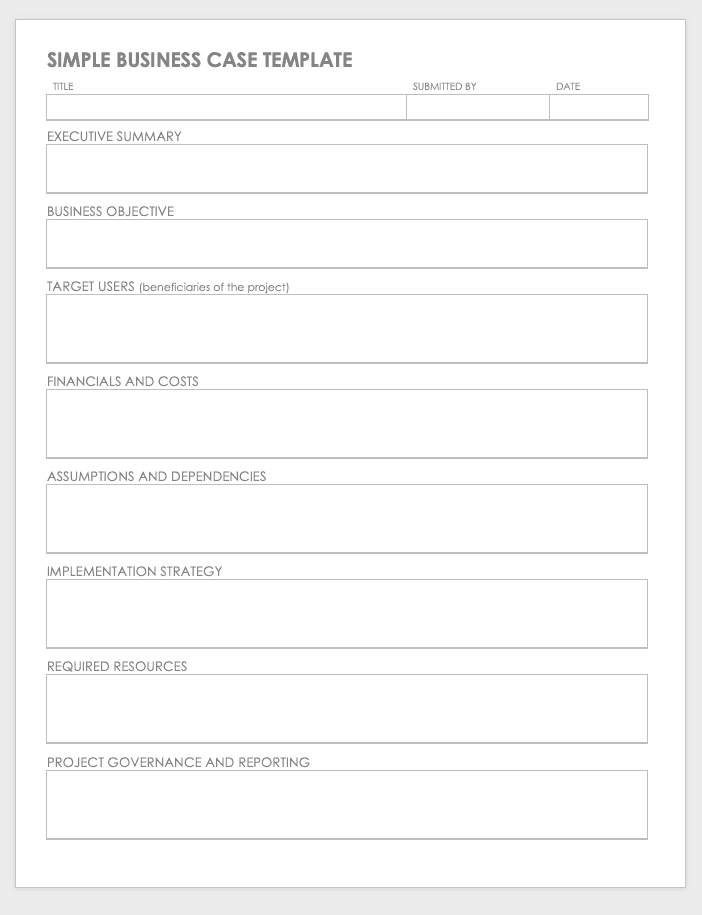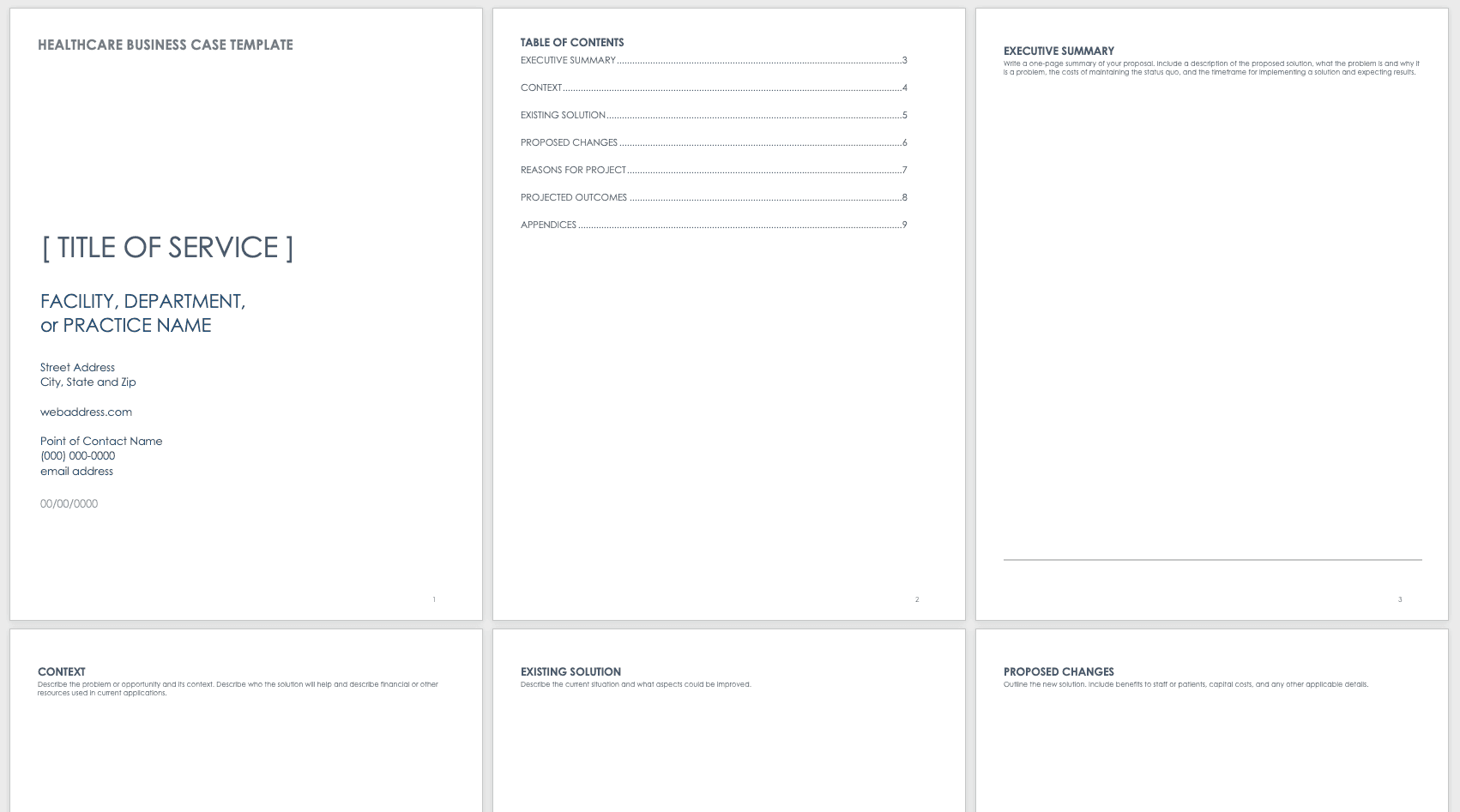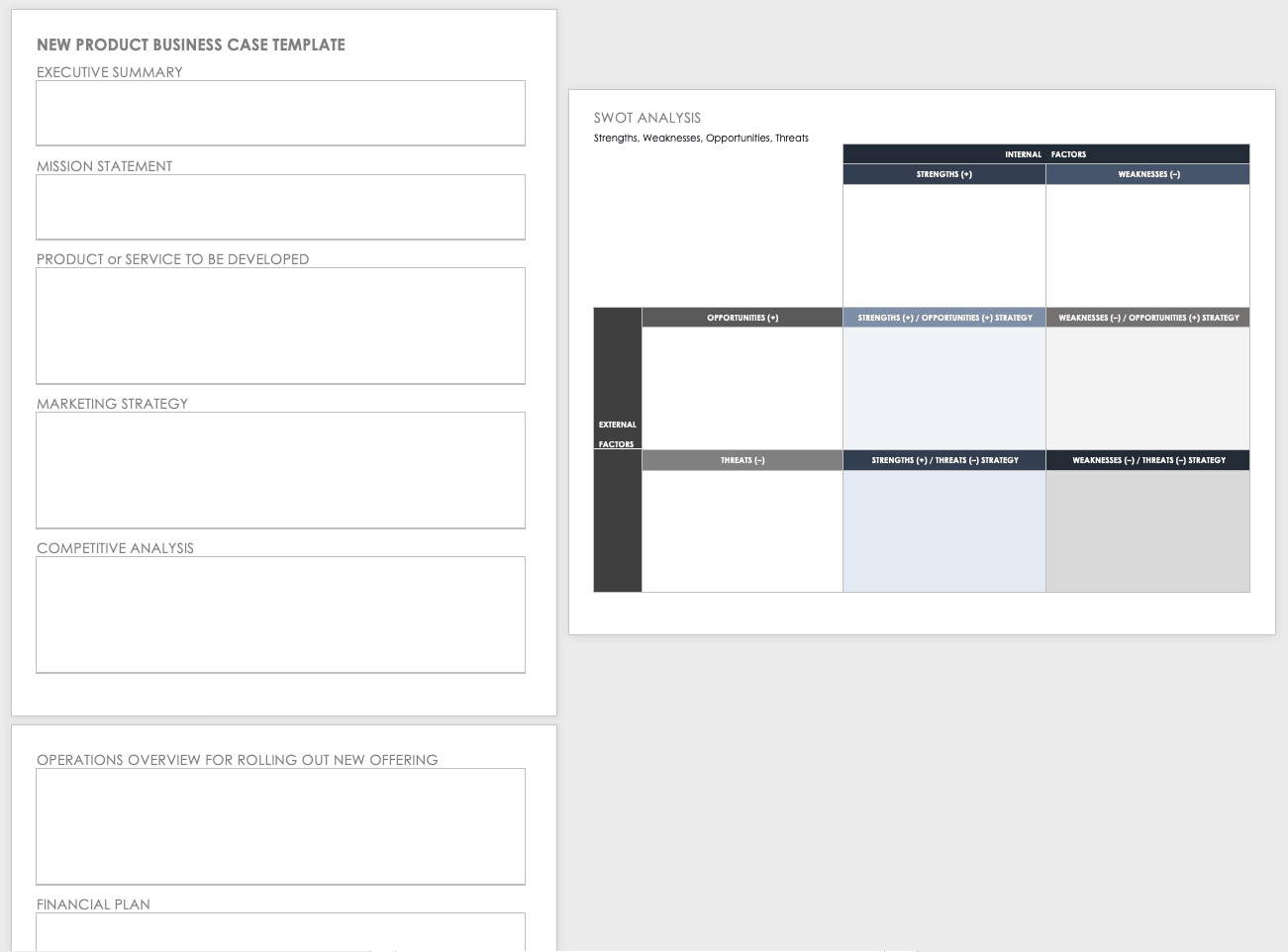What Is a Business Case?
A business case is a formal, structured document; an informal, short document; or a verbal exchange that defines the benefits of an initiative or project.
In addition, a business case forecasts the costs, benefits, and risks of an initiative, so decision makers — and even the project initiators — can decide whether a project is worthwhile and why to choose one approach over similar strategies.
Jim Maholic has over 20 years of experience with IT strategy and business case development, including two stints as a CIO, two management positions with the Big Four consulting firms, and leadership positions at several technology companies.
He describes a business case in this way: “A business case is the full story that explains the ROI for a capital project. It begins with a statement of a business problem, then explores how we can solve it or what the value of solving it is. For example, ‘Our revenues aren’t rising as fast as they should,’ or ‘Inventory isn't turning over as fast as it should,’ or ‘Costs are too high.’ That's where the business case starts.
Business Cases Explain Why You Should Invest
A business case explains why stakeholders should invest in a project. The purpose of a business case contrasts with that of a project proposal, which provides a high-level outline of what you want to initiate and its benefits to the company, or that of a project plan, which explains how you execute a project. You should create your business case during the earliest stages of project planning.
A business case can also become a key document for a project manager when planning, creating milestones, and evaluating progress.
Other names and uses for business cases are financial justification, cost-benefit analysis (CBA), total cost of ownership (TCO) analysis, and return on investment (ROI) analysis. Nonprofits and government entities sometimes refer to business cases as case statements.
What Is Business Case Analysis (BCA)?
A business case analysis (BCA) looks not only at lowest costs, but also at technical value and other nonquantitative factors in what is known as a best-value analysis. The BCA addresses the triple constraints of time, money, and scope, and it can include measures such as performance, reliability, viability, and supportability.
Although business case analysis is used interchangeably with business case, some experts consider the analysis to be part of the business case as a whole.
What Is a Business Case Used For?
A business case helps a company or an organization prepare for new ventures or changes. This document is a crucial building block of project success and underpins the foundations of senior-level involvement and strong planning. Business cases summarize the benefits of an endeavor, clarifying a project’s business value to help stakeholders make decisions.
A good business case should focus less on the technology, domain knowledge, or specific deliverables and more on the users of a product and the goals of a project. In the same vein, a project manager should focus not only on creating output, but also on delivering value. An initiative can offer many types of value, including contributing to strategic aims, increasing efficiency, and supporting compliance. Insufficient attention to the details of a business case and the accompanying research can lead to poor project results.
Business cases usually describe these items:
- A business problem or opportunity
- Possible solutions and their benefits and disadvantages (sometimes known as disbenefits)
- Risks associated with the main solution
- Costs
- Implementation timeline
- Consequences for implementing a solution and for retaining the status quo
- Resources required for the initiative or project
Advantages of a Business Case
A business case may seem like just another document destined for the shelf or the shredder, but it can offer real advantages:
- All stakeholders have similar expectations concerning the value and benefits of an initiative to an organization.
- You can convert a business case into a project plan with milestones. You increase the chances of a project’s success with planning.
- A business case becomes a gauge for determining whether an endeavor continues to offer value during execution and after a team produces a deliverable.
- Project planners can more easily establish objectives and goals.
- You can more easily discern success.
- Teams apply the right resources more efficiently.
Who Prepares a Business Case?
You might think that business cases are the purview of financial officers and accountants. In fact, people who have direct knowledge of processes and teams should be responsible for creating these documents.
Some pundits say that the individual who advocates change must enact the change, so anyone in any role could assume the responsibilities for producing a business case. This includes consultants, line managers, or IT managers. In some organizations, the project sponsor or project manager may guide the preparation of the business case and include input from relevant departments and SMEs.
When Do You Need a Business Case?
It’s no longer enough to complete a project and present a deliverable. In an economy that often seems as unstable as it was in 2008, stakeholders want to see that a deliverable creates value and benefits for an organization. This is particularly true for complex projects or those that require justification for enlisting external resources. Public sector projects frequently need business cases.
What's in a Business Case?
A business case outlines for a decision maker the benefits and business value of a proposed initiative. The term business case frequently refers to a written document that is submitted for review or presented at a meeting, but can also apply to an informal, spoken proposal.
What Should Be in a Business Case?
A well-written business case flows logically from presenting a problem or opportunity through the advantages and disadvantages of solutions to describing the recommended solution. When you require great detail, you can chunk text into sub-sections so that the content is easier to scan, as well as faster and less overwhelming to read. Following are the common sections of a business case in sequential order:
- Executive summary
- Problem statement
- Analysis and financial details
- Recommendation
Many organizations have pre-established templates for writing business cases. If your organization doesn’t, search online for free, easy-to-use business case templates for construction business cases, one-page business cases, and more. Depending on the narrative needs of the business case, it can contain many possible sections:
- Preface: A preface may indicate the intended audience and any related documents.
- Table of Contents: If your document is delivered as a PDF file, consider hyperlinking your table of contents to the appropriate sections.
- Executive Summary or Executive Briefing: This is the last part of the business case you write — but also the first and sometimes the only portion that people read. Therefore, it’s crucial to get this step right. Maholic recommends a one-page executive summary that includes answers to four questions that you compile after you’ve written the rest of the document. Present these questions in a slide, using four bullet points:
- What is the problem?
- What do you believe is the value of solving the problem?
- How much are you asking for?
- When will we start seeing benefits?
“I’ve had some presentations that don't get beyond that first page,” Maholic muses.
- Description of the Product or Service: When proposing a new object or concept, detail what the deliverable is and how it works.
- A Problem Statement or Mission Statement: By describing the problem or the mission of the organization, you can contextualize the proposed initiative.
- Business Drivers for the Initiative: Indicate what benefits will contribute to the strategic aims of the organization.
- Finance Section: Explain how much the project will cost and whether it is affordable. Detail the cash flow. Describe the expenses to execute (or not execute) the project in a cost comparison against forecasted benefits. Conduct a sensitivity analysis, a technique for determining how the different values of an independent variable affect a dependent variable.
- Project Definition: Why this project? What’s the goal? What problem are you trying to solve? Present background information, such as comparable programs. Explain how this effort will add business value. Detail the following benefits and limitations:
- Financial and nonfinancial benefits
- Quality improvements
- Cost savings through efficiencies
- Added revenue
- Competitiveness
- Improved customer services
- Options: What are the possible solutions to the problem? Usually, you narrow this list to 3 to 5 viable choices. Frequently, you include a “do nothing” option and a benchmark option. Some organizations require the do-nothing option; others require it only if the do-nothing option is a legitimate possibility. Quantify the benefits of each potential solution. Also, outline the risks, issues, and interdependencies for each solution.
- Plan Outline: Detail the who, what, when, and where of the initiative. Summarize the main activities and provide a timeline. Divide the project into stages and answer these questions for each stage:
- What is required?
- How is it done?
- Who does what?
- When will things happen?
- Assessments or Analysis: Your analysis should list assumptions and consider cash flow and costs. Describe the risks of the project and the plans to deal with them. Also, discuss how you will leverage opportunities. Describe the context of your undertaking using PESTLE (political, economic, sociological, technological, legal, and environmental) analysis.
- Project Approach: Detail the organization of the project, including governance and accountability, roles and responsibilities, and the schedule of progress reporting. Describe the purchasing strategy for completing the endeavor. Will you lease equipment? Rent office space? Hire contractors or employees?
- Recommendation and Next Steps: Note the recommended solution and immediate required action.
- Appendix: Add supporting documentation here, such as spreadsheets, charts, or drawings.
Considerations for Executive Presentations
The sections that comprise a business case may vary depending on your house style and the type of initiative. Jim Maholic says, “I package my business cases this way: I set up a one-hour meeting, so I have maybe 20 slides, but 10 to 15 slides are plenty. In reality, I might have 100 slides, but I add those in an appendix.” You may have credible supporting information, but you don’t want to bore your audience of decision makers by slogging through each slide.
“They might allocate an hour, but honestly, you're going to get their attention for 10 to 15 minutes, and then they'll start checking email and stuff,” Maholic adds. “You really have to be crisp in how you do this and know where you're going.
“Start with, ‘We have this problem,’ followed by, ‘Here are the people that we talked to who validated that this is a problem. They offered ideas about solving this problem, so we could see this substantial benefit,’” he notes.
“What matters in an executive meeting is that I answer the main questions: What is the problem? What is the cost of not solving it? What are the benefits of solving it? And when do we see the benefits? You may address additional questions later in the meeting or after the meeting, on an individual, offline basis,” Maholic says.
Business Case Templates
Using templates, you can more easily create business cases because you can focus on your research and fill in the blanks. The following free, downloadable templates are customizable for your organization’s needs.
Business Case Presentation Template
You can lengthen this short PowerPoint presentation template to accommodate more detail. The business case presentation template includes spaces for describing the following elements: the project name, the executive summary, the project description, the financials, the recommended solution, the assumptions and dependencies, the options, and the benefits.
Simple Business Case Template
A simple business case template serves a small project or a small organization. It can cover extensive details if necessary. It includes spaces for describing the following elements of the case: the title, the executive summary, the business objective, the target users, the financials and costs, the assumptions and dependencies, the implementation strategy, the required resources, and the project governance and reporting.
Download Simple Business Case Template
Word | PDF | Smartsheet
Healthcare Business Case Template
A healthcare business case template helps you explain the current setup and how the proposed solution can create improvements. It provides space for a one-page executive summary, context for the problem or opportunity, a description of the current situation, an explanation of the proposed changes, and details of how the changes can affect your organization and any other entities.
Download Healthcare Business Case Template
New Product Business Case Template
A new product business case template explores the business landscape for a new product or service. In addition to the meta information, such as the title, the author, and the executive summary, the template includes space to describe the current mission statement, the proposed product or service, the marketing strategy, an analysis of competitors, SWOT analysis, an overview of the implementation plan, and financial details.
Download New Product Business Case Template
Preparing to Write the Business Case
You can expedite your business process by understanding business case structure and using a template. In addition, having the correct perspective and following best practices can contribute to your success.
Why Are You Doing the Project?
Before you start researching and writing, understand why you want to initiate a project. The goal of a project is to solve problems. What is a problem? A problem prevents your organization from achieving its full potential. To begin, determine what problem the project is trying to solve.
Projects have deliverables, whether tangible or intangible. Think of an outcome as the result created by the deliverables. Benefits represent quantifiable improvements derived from an outcome. When a customer or team member can leverage these benefits, they become advantages.
Do Your Business Case Research
To start, review the mission statement(s) for the organization or the project. Identify the sources of data for your business case. One way to encourage the acceptance of your proposal is to discuss your rough estimates of the costs and resources with a project sponsor or customer before you embark on the business case. This helps you and the sponsor understand each other’s expectations and lessens the chance of sticker shock during the executive presentation. Then interview the people who conduct the day-to-day work and get their perspective on problems and possible solutions.
Do the Business Case Math
You must consider whether the returns justify the request. “If we're asking for $3 million, we've got to show that the project benefits far exceed that amount,” asserts Maholic. “With returns of $10, $15, or $20 million, you're going to get their attention. If you say the benefits are $300 million, they're going to think you've fallen off the truck somewhere, because that's not realistic. On the other hand, if you show benefits of $3.5 million for a cost of $3 million, that's probably not going to beat the projected return of any other project that comes across their desk.”
Consider Who the Business Case Is For
Whether the business case comes in document form or as a presentation, the project sponsor and key stakeholders will study it. Consider the key audience for each section of your document and write with that audience in mind.
The most convincing arguments for projects are those that your team can initiate and wrap up within six months, as well as produce considerable quantifiable results. Especially when big money is on the table, your proposal will compete with others from different departments. “No company has all the money it wants to invest in everything — it has to prioritize. The business case helps evaluate what the return will be for each of the projects that comes across the board's desk for approval,” explains Maholic.
Furthermore, a business case presents estimates. A business case should be built on sound research, but no one has a lock on certitude. “I think first-time business case writers in particular get caught up in building some great story. But seasoned executives get requests all the time, and they're not buffaloed by clever-sounding words or fancy spreadsheets,” Maholic cautions.
“Your ideas have to be rooted in something sensible, not just, ‘I bet we can raise revenues by 15 percent,’” he explains. Grand plans may be possible, but the key, according to Maholic, is to help decision makers understand how it is possible.
How Do You Write a Business Case?
When you have the main questions in mind and a sense of the required sections and format, you can begin to write. Consider limiting the number of authors to ensure an effective writing effort that’s consistent in style and voice. Then follow these tips:
- Concisely cover the core content with enough detail, so stakeholders can make an informed decision.
- Compare options, so decision makers understand the landscape.
- Be clear, concise, and captivating.
- Avoid jargon as much as possible.
- Demonstrate the value of the project to the business by creating a credible and accurate argument.
- Clearly describe the landscape for the initiative, including its dependencies. Enumerating these dependencies is crucial because contextual changes can alter the project parameters or eliminate the need for the project altogether.
- Focus on the business and the business value rather than the knowledge domain covered by the intended project deliverable.
How Do You Know You Have Enough Detail?
You determine the length of your business cases according to the scope and complexity of your proposed endeavour. A complex project means a long business case; a small, short project means a short business case.
However, Maholic cautions against adding too much detail — conciseness can be a challenge. “You may take 4 to 6 weeks to create a business. You might talk to 50 or 100 people. There's this gnawing urge in some people to show everything they've collected in the executive presentation. Look how hard we worked. Look how smart I am. That's just awful.
“You have enough data and slides when you can answer those 4 or 5 basic questions. There may be 100 other slides, but those are supporting detail,” he says.
Steps to Produce a Business Case
Your organization may have a tribal understanding of the best process for creating a business case. Some employees may advocate for following the Ds, which refer to the steps to produce a business case. The Ds can include as many as six steps, but generally focus on these four:
- Discover your problem or opportunity.
- Design your solutions and alternatives.
- Develop the details that describe the pros and cons of each potential solution.
- Deploy the business case.
Some advocates add the Define step to the beginning of the process and the Deliver step to the end. For best results, create your business case in the following order:
- Determine your problem or opportunity.
- Research the context for your proposal as appropriate: When developing a new product, your research may focus on the market; when acquiring new training or software, you may review current internal processes; and when making a new purchase, you may interview dozens of team members who use current tools and procedures.
- Compare alternative approaches and recommend the most appropriate strategy.
- Gather supporting data and evidence for the recommended approach.
- Write the business case.
- Write the executive summary.
- Edit your business case draft.
- Present your business case to either the final authority or the personnel who will be instrumental in implementing the case plan.
The Business Case in Project Development
Contrary to what you might imagine, the business case can be a living document. Starting with the review process, stakeholders may reject, cancel, postpone, accept, or adjust the business case. To some extent, the business case becomes the guidebook for your initiative. Stakeholders and the project manager should refer to the business case throughout the lifecycle of the project to ensure that efforts (and intentions) remain on track.
What Are the Features of a Project Business Case?
A well-considered business case offers the following characteristics: an easy-to-understand description of the business value of the initiative and the immediate benefits of the project, including details of the positive impact on organizational strategy.
How Do You Analyze a Business Case?
In university-level business schools, business case studies (or case studies) function as teaching tools to help students use their analytic skills. Case studies describe a company and how it employs a solution. Following is the suggested approach for students analyzing a case:
- Review the case in detail. Identify the key issues.
- Determine 2 to 5 essential problems.
- Look for solutions to those problems.
- Describe your recommended solution.
What Is a Full Business Case?
A business case is a structured, detailed document that presents the justification for the commitment of financial and other resources to an endeavor. Business cases help you gain the support of management and other stakeholders, as well as approval for projects and programs.
What Is a Business Case in Project Management?
An approved business case can have a long life. Although the project sponsor ultimately owns the business case, it is the project manager who uses the business case as the guidebook for expectations and dependencies. In addition, the business case becomes an important document in an organization’s project portfolio management process. During this process, a company balances its resources with its strategic objectives to determine the livelihood of all the projects it undertakes.
History and Origins of Business Cases
The formal business case has its roots in 19th-century Europe, particularly with the work of French-Italian engineer-economist Jules Dupuit. His contribution included statistical tools to identify, measure, and value the benefits beyond merely determining the lowest bidder. Specifically, Dupuit is credited with inventing what he called the benefit-cost analysis. Today, professionals recognize the value of business cases outside of public works and government. Both nonprofit and for-profit organizations regularly use business cases.
Resources and Examples for Creating Your Business Case
If you’re new to business cases, you don’t have to start empty-handed. We offer resources to help you begin writing. Please see the following examples and templates:
- Here’s an example of a business case in a classic document format. This particular business case argues against a capital investment.
- This example presents three business cases for one higher education department. The presentation comes in a slide format.
- In this article, Jim Maholic offers a template for creating your business case.
Improve Your Business Cases with Real-Time Work Management in Smartsheet
Empower your people to go above and beyond with a flexible platform designed to match the needs of your team — and adapt as those needs change.
The Smartsheet platform makes it easy to plan, capture, manage, and report on work from anywhere, helping your team be more effective and get more done. Report on key metrics and get real-time visibility into work as it happens with roll-up reports, dashboards, and automated workflows built to keep your team connected and informed.
When teams have clarity into the work getting done, there’s no telling how much more they can accomplish in the same amount of time. Try Smartsheet for free, today.




